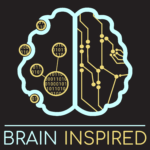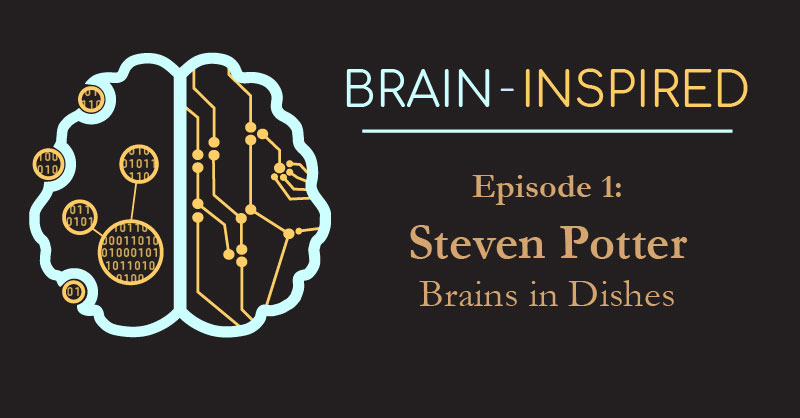
/
RSS Feed

 Find out more about Steve at his website.
Find out more about Steve at his website.
I discovered him when I found his book chapter “What Can AI Get from Neuroscience?” in the following:
“50 Years of Artificial Intelligence: Essays Dedicated to the 50th Anniversary of Artificial Intelligence,” M. Lungarella, J. Bongard, & R. Pfeifer (eds.) (pp. 174-185). Berlin: Springer-Verlag. Download the chapter. Link to the whole book at Springer.
These days Steve is semi-retired, but is an active consultant for high-tech startups, companies, or individuals.
Things mentioned in the show (check out his part 2 episode for more links!)
- Papers we talked about:
- Publishing negative results!
- Wagenaar, D. A., Pine, J., & Potter, S. M. (2006). Searching for plasticity in dissociated cortical cultures on multi-electrode arrays. Journal of Negative Results in BioMedicine 5:16. Download
- Solving the bursting neurons problem:
- Wagenaar, D. A. Madhavan, R. Pine, J. and Potter, S. M. (2005) Controlling bursting in cortical cultures with closed-loop multi-electrode stimulation. J. Neuroscience 25: 680-68 Download
- Training the cultured networks:
- Chao, Z. C., Bakkum, D. J., & Potter, S. M. (2008). Shaping Embodied Neural Networks for Adaptive Goal-directed Behavior. PLoS Computational Biology, 4(3): e1000042. Online Open-Access paper, supplement, and movie.
- Bakkum, D. J., Chao, Z. C. (Co-First Authors), & Potter, S. M. (2008). Spatio-temporal electrical stimuli shape behavior of an embodied cortical network in a goal-directed learning task. Journal of Neural Engineering, 5, 310-323. Download reprint (3MB PDF)
- The richness of the bursting activity:
- Wagenaar, D. A., Pine, J. and Potter, S. M. (2006). An extremely rich repertoire of bursting patterns during the development of cortical cultures. BMC Neuroscience 7:11.Reprint (2.79 MB PDF).
- You can find tons (over 40GB) of data from that paper here.
- Publishing negative results!
- Animals to Animats
- Douglas Hofstadter
- Rodney Brooks: embodied cognition and AI.
- Neuromorphics: Carver Mead.
- Real-World Teaching (Steve’s award winning teaching method).
- Science as Psychology: Sense-Making and Identity in Science Practice. This is the book about Steve’s and others’ process of dealing with failure etc.
- MEART: The semi-living artist.
- Silent Barage: noisy pole robots.
- SymboticA at University of Western Australia.